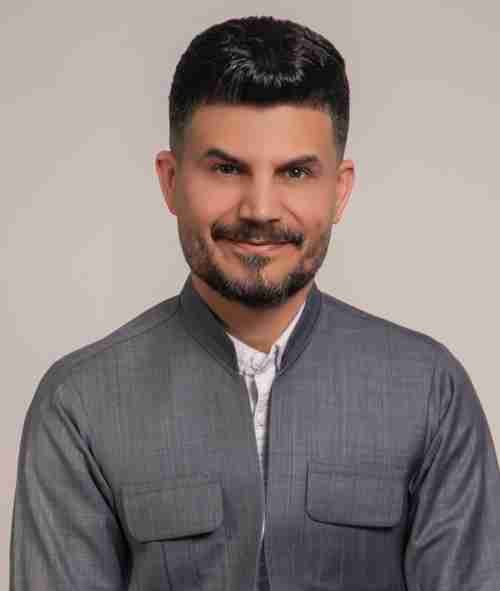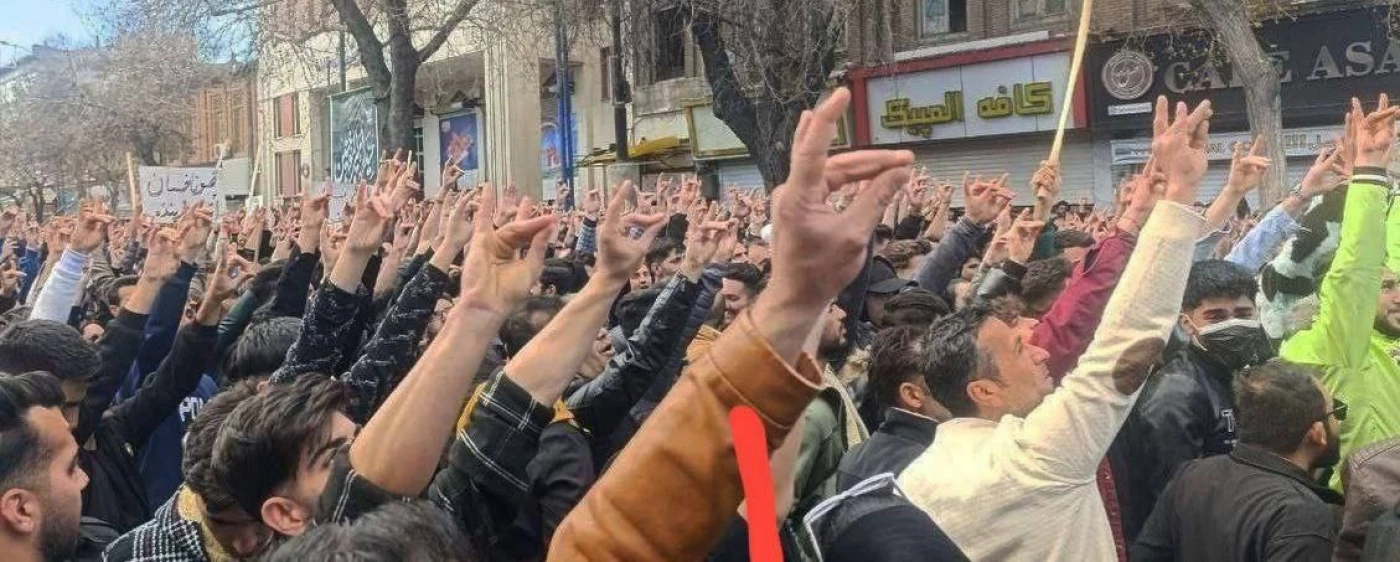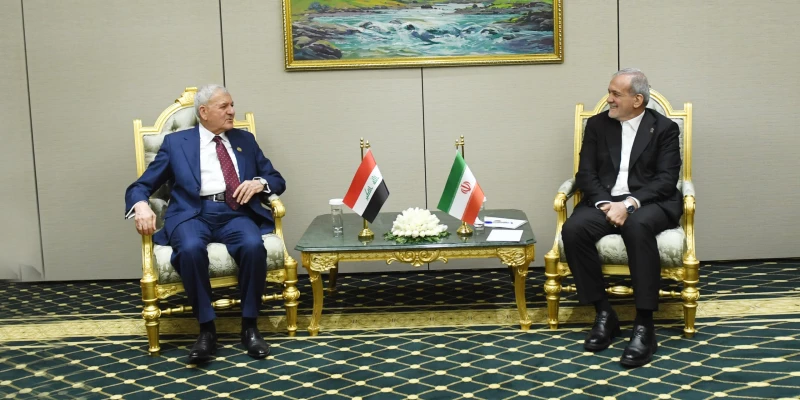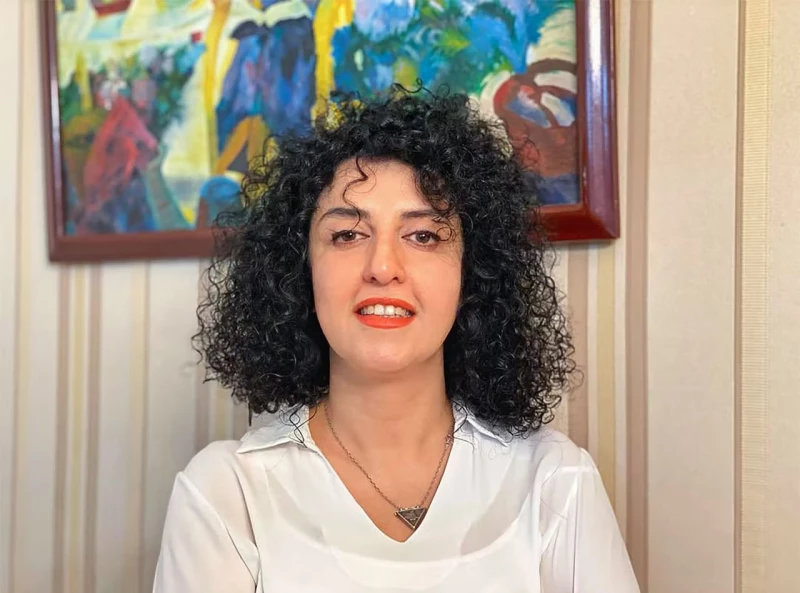STRASBOURG, France - Hundreds of Azerbaijanis in Iran’s northwestern Urmia took to the streets on Saturday, raising the Turkish ultranationalist Grey Wolves gesture against the Kurdish residents of the city, prompting reactions from both communities.
The people of Urmia say that the group take advantage of the government and push their own agenda, even those in power in the central government in Iran feel threatened by them but they cannot take action against them because the group have key connections and rule in their own region.
Located in western Iran, Urmia is the largest city in the West Azerbaijan province. The city is located near the borders with both Turkey and the Kurdistan Region.
Abdullah Hijab, a political analyst, believes “they are not a strong faction now, but can cast influence during crises by manipulating people’s emotions, because they take advantage of two factors: nationalism and religion.”
“They are an extremist nationalist Azerbaijani faction who oppose the Kurds in national and religious matters,” Hijab said, claiming that the group “are backed by Turkey.”
Political activist Sidad Sherzad told The New Region that “there is a wish for establishing a Turkish state within the Turks in Iran, with Turkey and Azerbaijan indirectly supporting the cause, and Iran has noticed the threat.”
The sanctions, Iran’s sidelining on the global level, international pressure, and the presence of hidden powers working behind the government have incapacitated Tehran from having a sufficiently strong reaction toward these pan-Turkish movements, according to Sherzad.
On Saturday, March 22, hundreds poured into the streets wearing all black to mourn Imam Ali’s death, the Shiites’ first Imam. But political pundits in the Kurdish region of western Iran saw the demonstrations as a reaction to the Newroz celebrations in the city which were attended by tens of thousands of Kurds four days earlier.
The Kurds’ Newroz celebrations were carried out on March 18. It was the first time the Iranian government had legally licensed such celebrations, and they were attended by tens of thousands of people.
Among the mourners, were notable figures in the Iranian political landscape, like Nadir Qazipour, a former Iranian MP who is thought to be one of the main movers of the extremist pan-Turkish factions in Urmia. They were showing the Grey Wolves gesture, a sign of ultranationalism and pan-Turkism, widely regarded as a racially motivated display.
“Be careful, we will revive the dry lake in Urmia with your blood, Urmia will not be Kurdistan, the very fact that you breath air in this city is because of the affection of our leader Sayyid Ali [Khamenei],” a mourner was seen saying, addressing the Kurds in a footage from the demonstrations.
However, this does not represent the view of all Azerbaijanis in the region, but only a small but loud portion.
“Urmia and West Azerbaijan is not only homeland to the Turks, it belongs to everyone living in it… we will not let populist officials deceive us for their personal and political agendas,” wrote Shayan Hoshiar, an Azerbaijani activist on Instagram.
The Kurds share a lengthy border with the Azerbaijani Turks in Iran’s Urmia, Sanandaj, and parts of Kermanshah, and they have been able to coexist for a long time, but there have also been numerous bloody altercations.
The Kurds and Turks have both seen oppression in Iran, such as being prevented from being schooled in their native languages, but the Azerbaijanis have not been subjected to the same degree of oppression as the Kurds have.
The Azerbaijanis are now one of the main component of the Iranian state, perceived by many as a hidden authority who direct a sizable portion of the country’s economy.
“Of all the employees in the municipality of Urmia – from mayor to gardeners – amounting to nearly 6,000 employees, there are only 40 Kurds, comprising less than one percent meanwhile Urmia’s population is 40 percent Kurdish” Sherzad told The New Region.
“There are 800 schools in the city of Urmia and only five of them have Kurds as principals, once again less than one percent, meanwhile of 120 official positions [across the province] only eight are occupied by Kurds, and some of those are in cities with an overwhelming majority of Kurdish populations like Piranshar and Oshnavieh,” he added.
Hijab, a Norway resident who is originally from Urmia told The New Region that “following the revolution in 1979, a very anti-Kurdish movement was formed who used the central government’s power to oppose the Kurds on account of two reasons.”
The first reason according to Hijab is that they are Shiites while the Kurds in the region are Sunni majority, with the second being on political, cultural, and geographical accounts.
Hijab detailed that the Azerbaijanis’ view has changed, they are now eyeing an empire for Turkish-ethnic countries with Turkey and Azerbaijan, which goes against the Iranian state, however they cannot stand in their way as they hold the key positions in the area and they rule and govern the region themselves.
“The Turkish intelligence service (MIT) directs this opposition movement and have organized them, aiming to stand against Kurdish movements and advance their own influence further in the region,” he added.
“Turkey sees itself as the successor of the Ottoman Empire, and is attempting to form a strategic pit, and part of this duty has been sublet to Azerbaijan who share a closer cultural and historical proximity to Iran’s Turkish population,” according to political activist Sherzad.
Sherzad added that in the past 20 years, the Kurds have started a civil struggle to take some positions of power and take their share of governance, but these changes are difficult to bring about as the opposing sides attempt to sabotage those struggles.
The Turkish opposition voices claim that the Kurds are refugees who have come to Urmia in the last 30 years, occupying it. They paint the Kurds as guests and occupiers and deny Kurdish rights in light of their claims.



 Facebook
Facebook
 LinkedIn
LinkedIn
 Telegram
Telegram
 X
X


